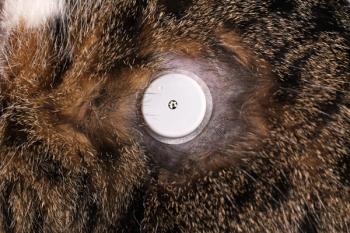
How to manage diabetes cases: Second in a two-part series
A Q&A with Dr. Lori Wise reveals strategies for managing diabetic cats and dogs.
Editor's Note: Lori A. Wise, DVM, Dipl. ACVIM is a partner with Wheat Ridge Veterinary Specialists in Wheat Ridge, Colo. She has special interests in diabetes mellitus, renal disease and immune-mediated diseases. She recently spoke with DVM Newsmagazine about trends in incidence, compliance and management of diabetes cases. Last month's topic focused on getting patients into remission. To access the article go to
DVM: Could you talk about the diagnosis and management of diabetes?
Wise: Most of the time, these animals are brought in because of weight loss, increased appetite, increased thirst and urination. Clients don't really know what is wrong with their dogs or cats. With baseline diagnostics, veterinarians can pretty easily make the diagnosis. A certain percentage of animals will be undiagnosed until they are ketoacidotic and sick from their diabetes. They become emergencies at this point.
Dr. Lori Wise
Diagnosing diabetes is pretty straightforward, but the challenge comes with management of these cases. In talking with other veterinarians, diabetes is one of those conditions that veterinarians hate to see because it can be difficult to manage. Clients get frustrated, and everything spirals downhill.
Years ago, we used to manage dogs and cats the same way. We wanted to get them regulated so they are not drinking and urinating excessively. We wanted to get the dogs to stop urinating in the house and regulate the cats so they aren't flooding their litter boxes to the point people can't keep them clean.
Stopping the thirst: Increased thirst and urination have long been known as telltale signs of diabetes in pets. But new advances in treatment and monitoring mean that most pets can be well-managed and live healthy, less waterlogged lives. (Arthur Tilley/Getty Images)
For dogs, in my mind, the goals of treatment have changed in that we have gotten more and more into home monitoring. With dogs, I still want their quality of life to improve and their water drinking, urination and weight loss to stabilize and improve, but I also want to delay the onset of diabetic cataracts. If you have a diabetic dog, the chances of it going blind from development of diabetic cataracts is almost 100 percent. About 80 percent of diabetic dogs will get cataracts within the first two years after diagnosis. Most of the time the progression of cataracts to blindness occurs really quickly. Is there some way we can delay or even prevent the development of cataracts? That is a huge goal for me.
There are very few insulin choices for dogs, and more insulins have gone off the market in recent years. So we are left with a Humulin (human recombinant) insulin for dogs. For cats, glargine and recombinant PZI insulins are both reasonable choices. My preference is a glargine insulin. It can also be used in cats that are long-standing diabetics.
Many of the clients I'm seeing now are willing to do better with regulating diabetic pets, and that has really improved with home monitoring.
For cats, there are much more exciting things happening in terms of management. This has been a progression over the past 10 years. It first started with our understanding of the role of diet and diabetes. As I mentioned, we now know that high carbohydrate diets are not a good idea. Home monitoring started being talked about as early as 2004, and there has been more and more interest in it. We also started using glargine insulin in cats in 2005. With all these things coming together, achieving and maintaining diabetic remission in cats has really become more likely.
If you have a recently diagnosed diabetic (over the last six months), and you can line up management tools like diet, home monitoring and use of glargine insulin, the chances of getting cats into diabetic remission are close to 100 percent.
When you have a cat come off insulin, well that is really huge for people. Cats feel much better, too. In looking at our numbers, we expect to get about 80 percent of these patients into diabetic remission. And that kind of mirrors what other people see, too.
Diabetes can be a very fun and rewarding part of practice. And that has been a revelation for me. Once you feel like you are more comfortable with it, and you are willing to walk hand-in-hand with clients to help them get their animals as best regulated as possible, then you have clients for life. It is a tremendous bonding experience for those clients to the practice.
People can and will home monitor, but they just need to know they have the support from their veterinarian and staff. Our technicians help our clients a lot. That is where a well-trained technician can be a huge help to your practice.
Newsletter
From exam room tips to practice management insights, get trusted veterinary news delivered straight to your inbox—subscribe to dvm360.






